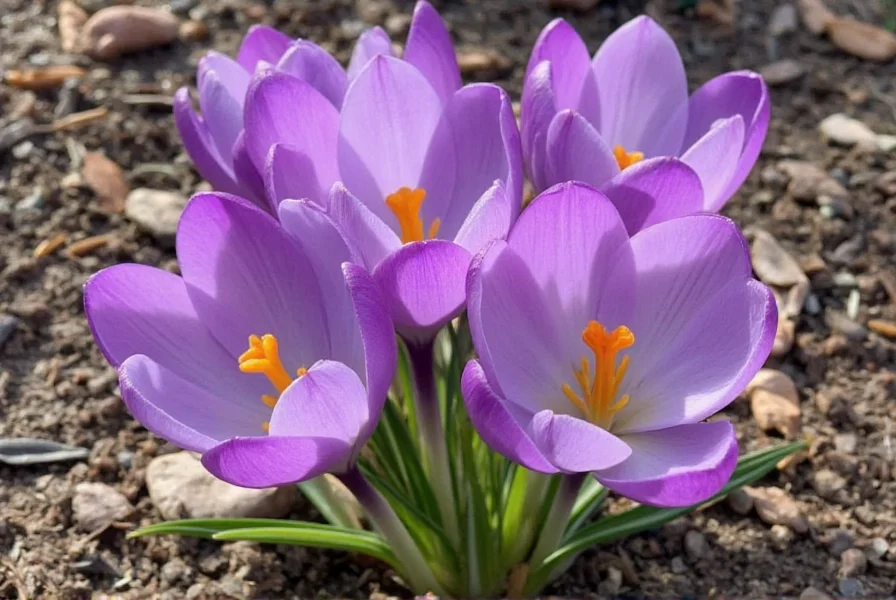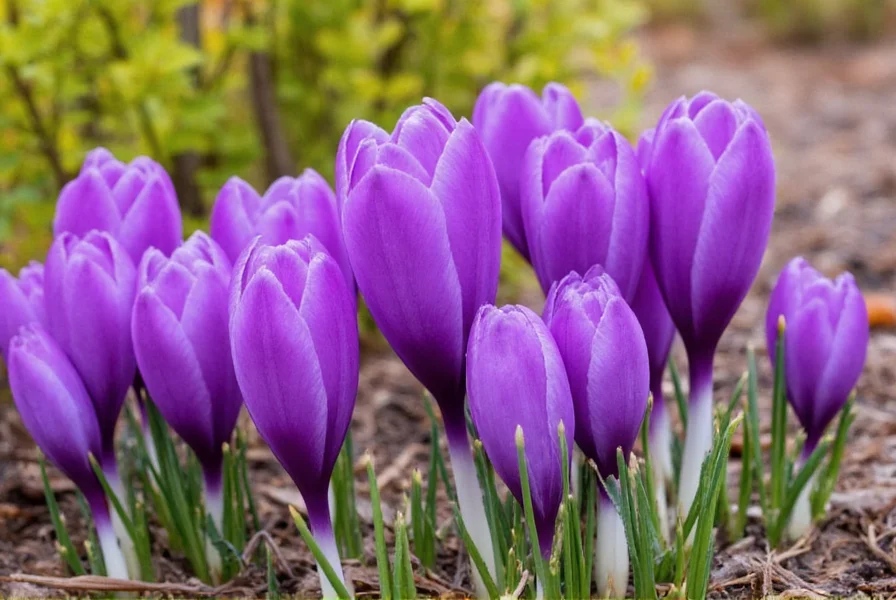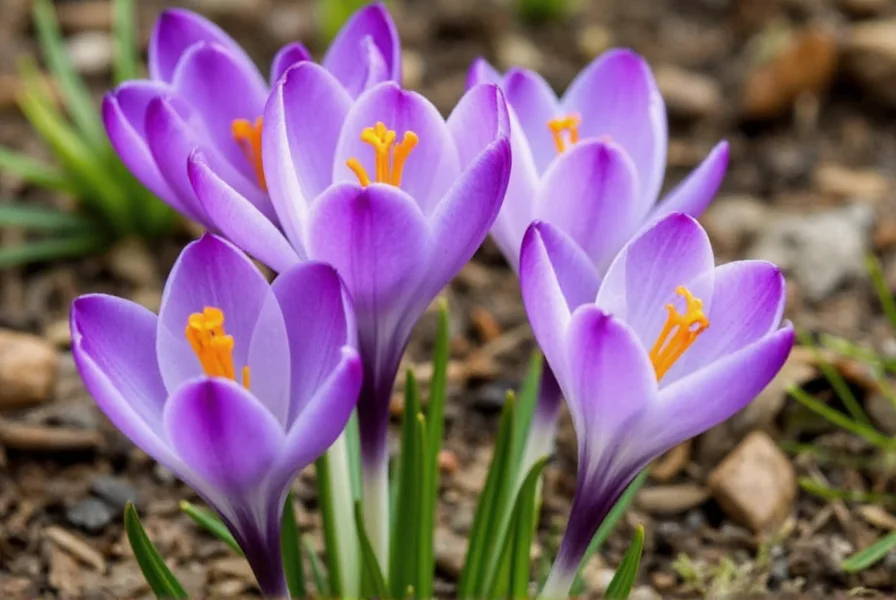Understanding how to successfully cultivate saffron crocus begins with recognizing that Crocus sativus isn't your typical spring-flowering crocus. This unique perennial produces the precious saffron threads we harvest from its vibrant purple flowers. Unlike decorative crocus varieties, saffron crocus serves a dual purpose: ornamental beauty and valuable spice production.
What Makes Saffron Crocus Unique
While many gardeners recognize crocus as early spring bloomers, saffron crocus (Crocus sativus) breaks this pattern with its autumn flowering cycle. These plants grow from corms—often mistakenly called bulbs—that contain everything needed to produce both flowers and the prized saffron stigmas. Each flower yields just three crimson stigmas, which when carefully harvested and dried become the saffron spice.
The reason saffron commands such high prices (up to $5,000 per pound) becomes clear when you understand the labor involved. It takes approximately 75,000 flowers—or 225,000 individual stigmas—to produce just one pound of dried saffron. This explains why successful crocus saffron bulbs cultivation requires careful attention to detail.
Planting Saffron Crocus: Timing and Technique
Successful saffron production starts with proper planting. The optimal time for planting saffron crocus corms varies by climate zone but generally occurs in late summer to early autumn, about 6-8 weeks before your first expected frost.
| Climate Zone | Recommended Planting Time | Expected Bloom Time |
|---|---|---|
| Zones 5-7 | August-September | October |
| Zones 8-10 | September-October | November |
| Cooler Microclimates | July-August | September-October |
When planting saffron crocus bulb depth matters significantly. Plant corms 3-4 inches deep with the pointed end facing upward, spacing them 4-6 inches apart. This depth provides adequate protection while allowing shoots to emerge easily. In heavier soils, plant slightly shallower; in sandy soils, plant slightly deeper.

Optimal Growing Conditions for Maximum Yield
The secret to abundant saffron harvests lies in replicating the plant's native Mediterranean conditions. Crocus sativus growing requirements include:
- Soil: Well-draining, slightly alkaline soil (pH 6-8) with good organic matter. Amend heavy clay soils with sand and compost.
- Sunlight: Minimum 6 hours of direct sun daily. More sun generally means more flowers.
- Water: Moderate watering after planting, then reduced during summer dormancy. Increase slightly when shoots appear.
- Temperature: Thrives in regions with hot, dry summers and cool (but not freezing) autumns.
One critical factor many gardeners overlook is the summer dormancy period. After flowering, the foliage dies back naturally. During summer months, keep the soil completely dry—this dry period triggers flower formation for the following autumn. This explains why when to water saffron crocus matters more than you might think.
Harvesting and Processing Your Saffron
Saffron crocus flowers open in the morning and close by afternoon, so harvesting must happen early. Pick flowers as soon as they open, ideally between 7-10 AM. The delicate stigmas must be removed immediately after picking.
Here's the proper harvesting technique:
- Carefully pluck entire flowers in the early morning
- Remove the three red stigmas using tweezers or fingernails
- Spread stigmas on a mesh screen in a single layer
- Dry at 150°F (65°C) for 10-12 hours or until brittle
- Store in an airtight container away from light
Understanding how many saffron threads per flower you'll get helps set realistic expectations. Each flower produces exactly three stigmas—these become the saffron threads. A healthy corm typically produces 3-5 flowers in its first year, increasing to 8-12 flowers in subsequent years under ideal conditions.
Troubleshooting Common Saffron Crocus Problems
Even with proper care, saffron crocus may encounter issues. Here's how to address the most frequent challenges:
Why Won't My Saffron Crocus Bloom?
Lack of flowering usually stems from one of these causes:
- Insufficient summer dormancy: The corms need a hot, dry summer period to initiate flowering
- Poor drainage: Soggy soil causes corm rot, especially during dormancy
- Shallow planting: Corms planted too shallow may dry out during summer
- Excessive nitrogen: Too much fertilizer promotes leaf growth at the expense of flowers
Dealing with Pests and Diseases
Saffron crocus generally resists most pests, but watch for:
- Voles and mice: These rodents love crocus corms. Plant in wire mesh baskets for protection
- Fusarium rot: Prevent by ensuring excellent drainage and rotating planting locations
- Botrytis: This fungal disease appears as gray mold; improve air circulation to prevent

Storing Saffron Crocus Corms Between Seasons
After the foliage dies back in late spring, you can either leave corms in the ground (in suitable climates) or lift and store them. In regions with wet summers or freezing winters, lifting corms is advisable.
To store corms properly:
- Dig carefully after foliage yellows completely
- Clean off excess soil and separate baby corms
- Store in mesh bags or paper bags with dry peat moss
- Keep in a cool, dark, dry place (60-65°F / 15-18°C)
- Check monthly for rot or excessive drying
Properly stored corms remain viable for planting the following season. Understanding storing saffron crocus bulbs correctly ensures your investment continues producing for years. Healthy corms multiply annually, potentially increasing your harvest each season.
Maximizing Your Saffron Yield
While growing saffron requires patience, these practices boost your harvest:
- Divide clumps every 3-4 years to prevent overcrowding
- Apply bone meal at planting time for phosphorus
- Use mulch in colder climates to moderate soil temperature
- Hand-pollinate flowers to potentially increase corm production
- Keep detailed records of planting dates and harvest yields
Remember that saffron crocus grown from corms typically takes 2-3 years to reach full production capacity. The first-year harvest will be modest, but with proper care, your saffron crocus bulb yield should increase annually as the corms multiply.
Frequently Asked Questions
How many saffron threads can I expect from one crocus bulb?
Each saffron crocus corm typically produces 3-5 flowers in its first year, with each flower containing exactly three stigmas (saffron threads). Under ideal conditions, mature corms (3+ years) may produce 8-12 flowers, yielding approximately 24-36 threads per corm annually. Remember that it takes about 75,000 flowers to produce one pound of dried saffron.
Can I grow saffron crocus in containers?
Yes, saffron crocus grows well in containers with proper drainage. Use pots at least 8 inches deep with multiple drainage holes. Fill with a mix of potting soil, sand, and perlite for optimal drainage. Container growing offers advantages for controlling soil conditions and protecting corms during winter in colder climates. Just ensure containers receive full sun and follow the same planting depth and dormancy requirements as in-ground planting.
Why do my saffron crocus flowers have yellow stigmas instead of red?
Yellow stigmas indicate you're growing a decorative crocus variety, not true saffron crocus (Crocus sativus). Only C. sativus produces the deep red stigmas used for saffron spice. Decorative crocus varieties have yellow stigmas that lack the distinctive flavor, color, and aroma of true saffron. Always verify you've purchased genuine Crocus sativus corms from a reputable supplier specializing in saffron production.
How long do saffron crocus corms last?
Healthy saffron crocus corms typically remain productive for 5-7 years before needing replacement. During this time, they multiply annually, creating new corms ( offsets) that can be separated and replanted. Proper summer dormancy conditions—particularly dry soil during hot months—significantly extends corm viability. In optimal conditions with proper care, some growers report productive corms lasting 10+ years.
What's the difference between saffron crocus corms and bulbs?
While commonly called "bulbs," saffron crocus actually grows from corms—solid, swollen stem bases rather than layered bulbs like onions. Corms store nutrients differently and multiply by producing new corms on top of the old ones, whereas true bulbs multiply by producing offsets around the perimeter. This distinction matters for planting depth and division techniques, as corms should be planted deeper than many true bulbs and divided differently during propagation.











 浙公网安备
33010002000092号
浙公网安备
33010002000092号 浙B2-20120091-4
浙B2-20120091-4